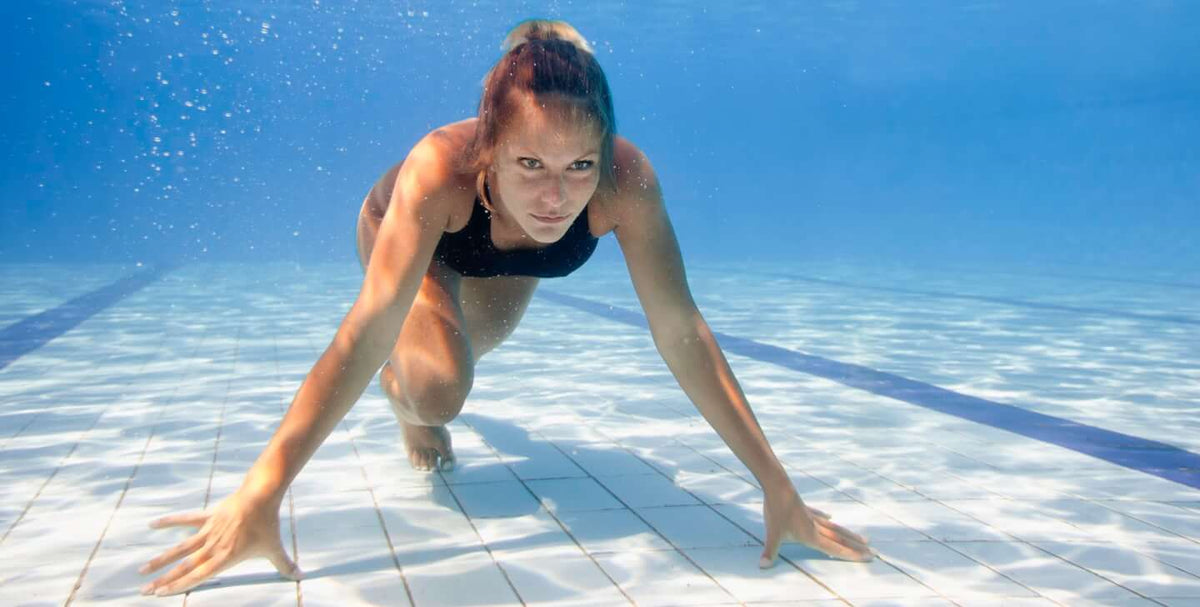Deep-Water Running Made Easy

Deep-water running is a go-to cross-training alternative for the injured. But, as SGX Coach and PT Mike Ryan explains below, it belongs on the schedule for anyone serious about their training, recovery and performance.
Why Deep-Water Running #1
Reason One: Joint-Friendly
This is a no-brainer. Because your feet don’t touch the ground, the compressive forces on the joint surfaces of every joint in your body are significantly less than in ground-based workouts.
This is especially beneficial for knees, hips, and low back. These three body parts typically demonstrate higher levels of arthritis for runners and cross-training athletes.
Why Deep-Water Running #2
Simplified Muscle Contractions
Simply stated: when you run in deep water, your leg muscles are only required to contract in one manner. When resisted by water, loaded muscles shorten with concentric contractions. This form of shortening muscle contraction is much simpler than the three types of contractions a muscle may perform when running on a hard surface. With land-based running, leg and core muscles may be forced to work while shortening, lengthening, and stabilizing.
Why is this important? Allowing muscles, tendons, joints, nerves, fascia, and brain matter to do their job more easily promotes faster body balance and conditioning gains.
Why Deep-Water Running #3
High Cardio
Cardio is king when it comes to endurance sports like Spartan races and off-road obstacle training. Because the water resists every motion the body makes, it demands a higher level of oxygen and glycogen (sugar) for the working muscles.
Leg, core, spine, shoulders, and arm muscles are all forced to work hard when running in deep water. Therefore, the athlete’s heart rate will climb higher with an elevated metabolism.
Tips for the Deep-Water Running
Flotation—Wearing a flotation belt or life jacket, or putting a pair of good old flotation noodles under your arms will help you focus more on the workout and less on not drowning.
Big Circles—Use a poolside coach or videotape yourself running in deep water to help you perfect the art of moving your submerged feet in big circles under your pelvis instead of little flutters in front of your pelvis.
Change Ends—Include runs in both the deep and shallow ends of the pool to vary the stress on your legs and core muscles.
The Arm Factor—Balancing in the water isn’t as easy as it sounds. A simple way to improve your balance in deep water is to extend your arms out to the side instead of swinging them.
Intervals and Time—Start with 30 seconds of running, 30 seconds of straight leg flutters (front and back), 30 seconds of scissor kicks (side to side) and repeat. Like any cardio workout, the total time will vary based on your fitness level.
Mind Games—Time moves extra slooooooooow in the pool. Music, training partners, challenges, and head games are simple ways to help pass the time while you bob yourself back and forth across the pool.
My Sports Medicine Tips
Girdle Up—Deep-water running is tough on your core, so be prepared. I suggest wearing a supportive girdle to provide your lower abdomen and higher groin muscles with extra support.
Get out of the Pool—Have fun with these water workouts. A challenging way to do this is to get out of the pool and into a pond, lake, or ocean. When was the last time you “ran” across a lake?
Hydrate—You’ll be burning through plenty of calories and fluids during these workouts. Even though you’re floating in water, dehydration is still a concern. Hydrate well before, during, and after deep-water running.
Learn more about Mike Ryan, PT, ATC, SGX: MikeRyanSportsMedicine.com. Learn more about Spartan SGX training.
Become injury-proof by getting stronger and more supple. Use the Spartan bodyweight training plan.




